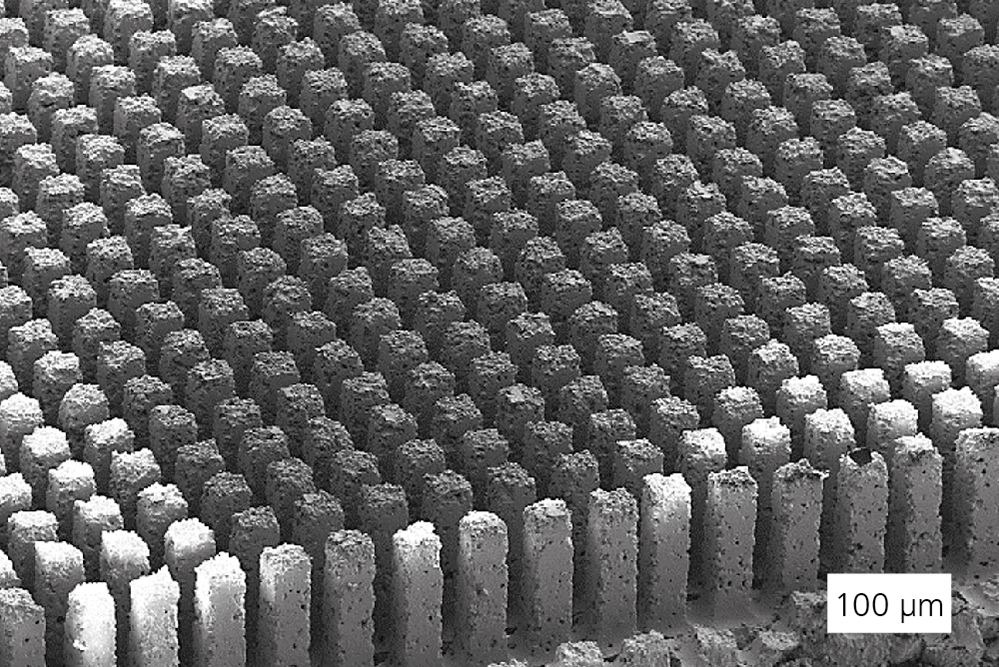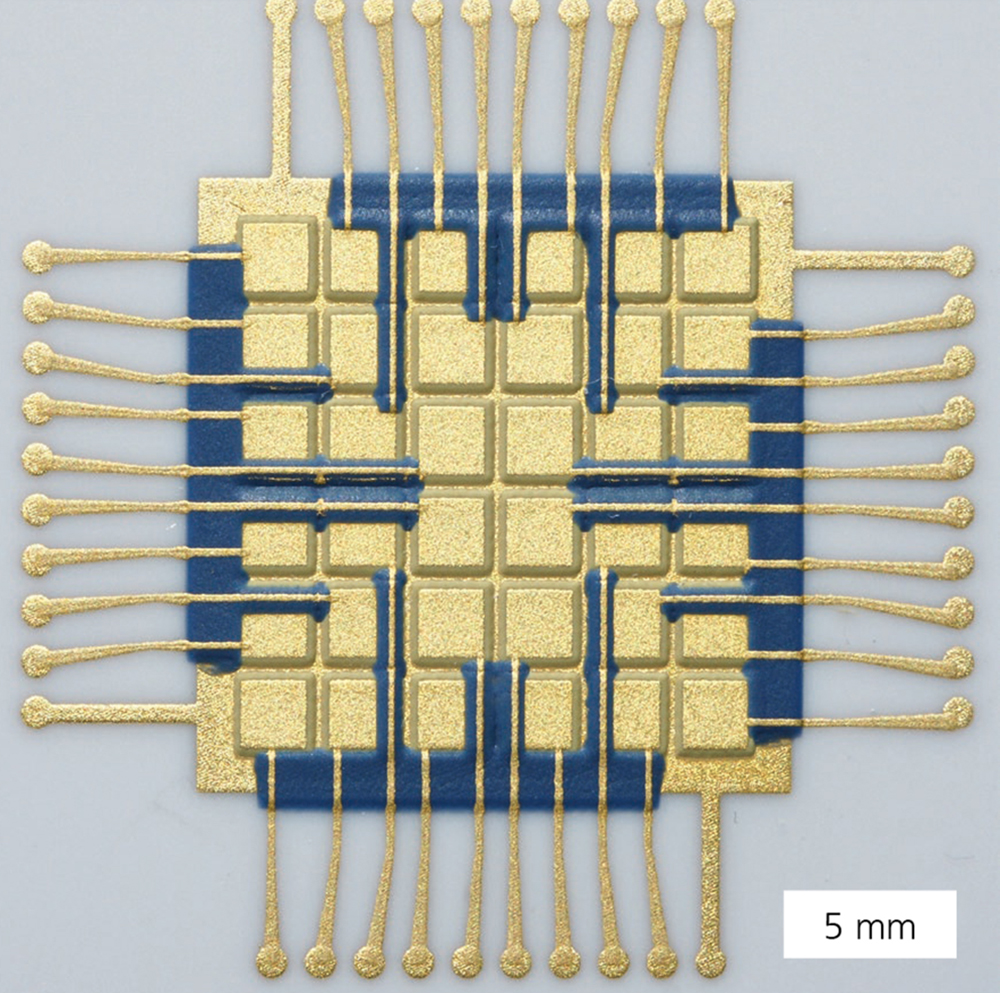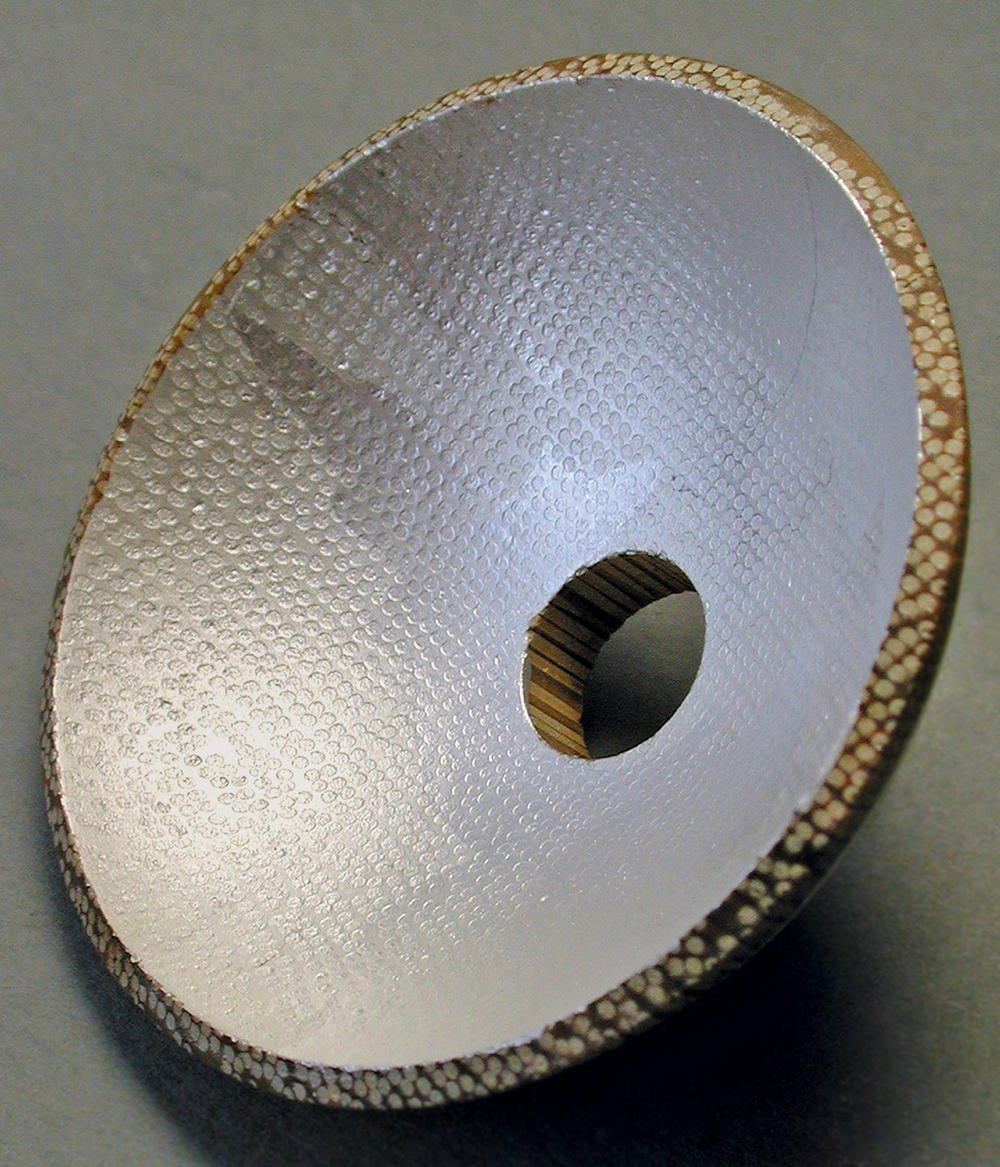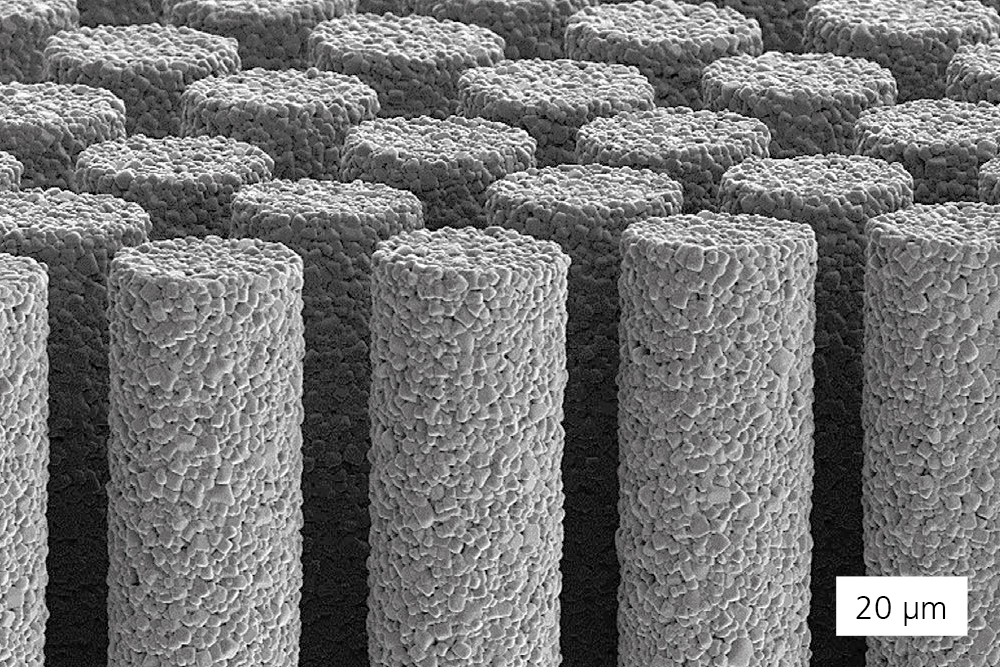
Ultrasonic transducers

Ultrasonic transducers are the most important component of ultrasonic probes. Utilizing its material and manufacturing know-how, Fraunhofer IKTS provides unique solutions for specific transducers as well as innovative testing applications.
Fiber composites
The combination of piezoceramic elements with polymer offers a wide range of high-performance ultrasonic transducers. In order to manufacture such transducers efficiently, both the piezoceramic components used and the piezoelectric composites derived from them need to be tailored specifically to the individual application. Fraunhofer IKTS manufactures PZT fibers using spinning process, thus offering powerful technology for the production of high-performance, long piezoceramic elements. They are arranged in composites in random or regular distribution allowing for the manufacture of ultrasonic transducers, which fit specific requirements:
- High frequency/low frequency
- Focused/non-focused
- Single element/segmented
Dice and fill composites


The dice and fill technique is the most common method to manufacture 1-3 piezoceramic composites. For this, a series of parallel cuts is made into a bulk piezoelectric plate in two directions that are perpendicular to one another. Usually, rods with a rectangular cross section are the result. The diced material is backfilled with a polymer and the base ceramic support removed by grinding. The resulting 1-3 piezoceramic composites offer the following advantages over standard bulk piezoceramics:
- Lower acoustic impedance Za
- Higher coupling coefficient kt
- Higher bandwidth B
- Lower mechanical quality factor Qm
The piezoceramic material will be selected according to application needs. For highly sensitive ultrasonic transducers 1-3 piezo- composites based on single crystal PMN-PT are manufactured.
Soft mold composites
For the manufacturing of ultrasonic transducers greater than 10 MHz the dice and fill process is limited due to the width of the dicing blade and brittleness of the piezoceramic plate. Fraunhofer IKTS has been invented the soft mold process which allows for 1-3 piezocomposites with smaller pitch size and free design of the piezoceramic rods. The idea of the soft mold process is to use master molds, which have been structured by microsystems technology like deep reactive ion etching of silicon wafers. From these, soft polymer templates are taken which are subsequently filled with a ceramic slip. After drying, demolding and sintering fine-scaled piezoceramic arrays are obtained which can be backfilled with a polymer and ground to the desired thickness. Using the soft mold process Fraunhofer IKTS is able to offer high-frequency ultrasonic transducers in the range of 5 to 40 MHz.
Screen printed ultrasonic transducers


Fraunhofer IKTS supplies special ultrasonic transducers manufactured by screen printing technology. Net-shaped PZT thick films with typical thickness of 30 to 150 μm can easily be deposited on standard electronic substrates like Al2O3, LTCC (Low Temperature Cofired Ceramics), silicon, and selected steel grades. Thereby compact devices with integrated piezoelectric function and electronics can be realized in batch production on wafer-level. They fulfill market requirements towards miniaturization and concentration. By patterning piezoceramic thick-film and electrode structures ultrasonic transducers can be designed as phased arrays or as line-focused transducers. Moreover, tubular screen printing can be applied onto cylindrical substrates for inspection tasks of hollow shafts and smaller tubes.



